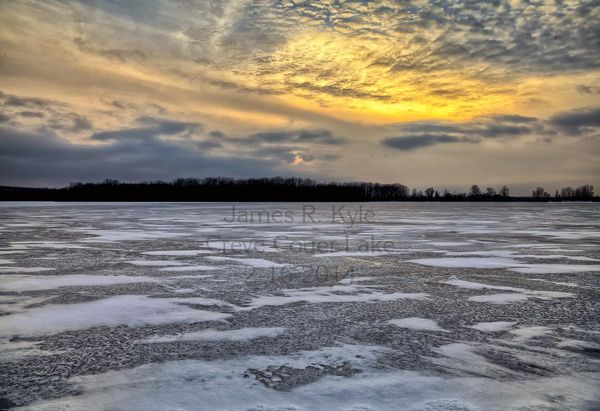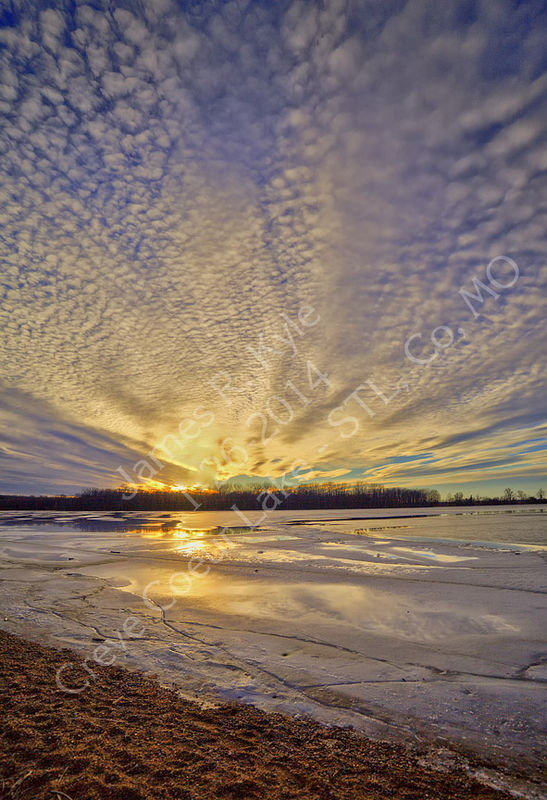Zone System for black & white photos
Dec 5, 2014 06:54:01 #
Doktor wrote:
Does anyone here remember using the Zone System for rich toned B&W prints? ... I'd like to know if the Zone System concept can be applied in this digital omelet.
Give a look at this then look at the Topaz Webinar bu Blake Rudis:
http://blog.topazlabs.com/digital-zone-system-system-blake-rudis/
His website is at:
http://zone-edit.com/
Dec 5, 2014 08:40:17 #
woolpac
Loc: Sydney Australia
Grandpa is pretty spot on - to add, all film types exhibit different characteristic curves. The goal is to understand straight line component of this curve and where d-max and d-min (compression of white and black)occur. The linear portion will be the maximum dynamic of the film i.e 5 stops. If you meter a scene with a dynamic range of say 7 stops clearly this will exceed the linear range of the film thus either blowing out high lights or blocking up shadow detail. Enter the world of the zone system and getting back to grandpa where you manipulate exposure and development time. In the digital world the same applies to image sensors they have a limited dynamic range though somewhat greater than any film I have used still have limits and still in F-stops but measure by quality levels (noise)instead of the use of sensitometry and densitrometry measurements. An example might be a canon 7d with a dynamic range of 10.5 stops but a quality range of 7.5 stops (this does seem to indicate the advantage of full frame sensors, less noise). Indeed the zone system can be adopted to digital by understanding some basic fundamentals dynamic range of both your camera and scene and employing HDR techniques in your process work flow.
Dec 5, 2014 09:29:28 #
The zone system is certainly relevant with digital black and white photography. I find there is not better way to judge the range of light i bring to my photographs. I do all of by B & W conversions using Silver Efex Pro. The software has a screen that apples the complete range of the Zone system to a particular photograph and allows me to better observe the range of light and make adjustments. I find that this helps my photos appear more dynamic.

Dec 5, 2014 09:49:53 #
Dec 5, 2014 10:18:48 #
Well, we used to say, "Ten fingers, ten zones," but now, with 14 or more stops of dynamic range in digital... we have to grow more fingers.
Dec 5, 2014 10:20:28 #
Doktor wrote:
Does anyone here remember using the Zone System for rich toned B&W prints? I once had a professional darkroom (where one actually got one's hands wet), and turned out beautiful prints. But alas, digital killed the film purist. Other than gallery grade prints, any photo can be fabricated. I'd like to know if the Zone System concept can be applied in this digital omelet.
You may find the following book to be of interest. While you are obviously familiar with the zone system, this book brings in the digital photo and post processing aspects.
http://www.amazon.com/Mastering-Exposure-System-Digital-Photographers/dp/1598639870/ref=sr_1_1?s=books&ie=UTF8&qid=1417792546&sr=1-1&keywords=mastering+exposure+and+the+zone+system+for+digital+photographers
Dec 5, 2014 10:22:58 #
Mogul wrote:
You learn the Zone System one of two ways, either ... (show quote)
AA placed the moon at zone VII because he wanted to show the moon as having detail, not just a white disk in his image- in fact, according to his son, he used the luminance of the moon, a value which he was completely familiar with, to establish his exposure. The rest was done in "post - the wet version" - interestingly the original contact print was pretty ordinary. It did not become the iconic image we are all familiar with until he burned in the sky, dodged the foreground, etc etc etc. It literally took him years before he was completely happy with the result from the one shot that he was able to get before everything changed. He even reprocessed the negative years afterwards to extract more contrast.
https://whitherthebook.wordpress.com/2013/02/27/ansel-adams-and-photography-before-photoshop/
http://www.artnet.com/magazineus/features/grant/ansel-adams-moonrise-hernandez-8-31-11.asp
Dec 5, 2014 10:44:16 #
Doktor wrote:
Does anyone here remember using the Zone System for rich toned B&W prints? I once had a professional darkroom (where one actually got one's hands wet), and turned out beautiful prints. But alas, digital killed the film purist. Other than gallery grade prints, any photo can be fabricated. I'd like to know if the Zone System concept can be applied in this digital omelet.
Here's what I did when I stopped printing in the darkroom and started either scanning negatives or using a DSLR:
1. Create an 8x10 step chart, from 0 to 100% black in 5% increments. Save in both grayscale and RGB.
2. Print, or have printed, the step charts. The step charts must be made by each printer, whether in house or commercial.
3. Using a reflection densitometer (borrow one if needed), determine the density of each step on each step chart printed.
4. Using Exel or equivalent software, create a line chart of density vs % black. You may see a slight difference between grayscale and RGB lines, especially in the mid range. You will need to choose which you want to work with. I personally prefer to work in RGB.
5. Assign Zone values to certain shades, and note them on the graph. Here is what I am currently using for my commercial printer:
RD 0 = Z9
RD 0.10 = Z8
RD 0.20 = Z7
RD 0.40 = Z6
RD 0.70 = Z5
RD 1.00 = Z4
RD 1.30 = Z3
RD 1.60 = Z2
RD 1.80 = Z1
RD 1.90 = Z0
These scales will be unique for each printer.
6. If the graph shows that, for instance, RD 0.70 (Z5) is at 67% black, then anywhere you have 67% black in your image will print out at Zone 5. Assuming your printer is consistent, it works every time, and you don't have to worry to much about your monitor being absolutely correct. The only thing that counts is the % black value in Photoshop or whatever program you are using.
This sounds a little complicated but it's easier than it sounds, and is also sort of fun to set up.
JackM
EDIT: Assigning Zone values to each step could probably be done by eye and personal preference also if you have some experience doing B&W in the darkroom. A densitometer would not be needed in this case.
Dec 5, 2014 10:50:48 #
That is a very clever way to apply the zone system. Silver Effex has done the work for you. It will evaluate your photo using the Zone system and show you on the photo each section of the photo that meets the requirements of each zone.
Dec 5, 2014 10:53:24 #
Doktor wrote:
Does anyone here remember using the Zone System for rich toned B&W prints? I once had a professional darkroom (where one actually got one's hands wet), and turned out beautiful prints. But alas, digital killed the film purist. Other than gallery grade prints, any photo can be fabricated. I'd like to know if the Zone System concept can be applied in this digital omelet.
Black Rudis has a B&W Zone system http://everydayhdr.com/everydayhdr-store/digital-zone-system-editing/
Dec 5, 2014 11:12:37 #
1Mo-Kan
Loc: Phoenix, originally Kansas City
mborn wrote:
Black Rudis has a B&W Zone system http://everydayhdr.com/everydayhdr-store/digital-zone-system-editing/
Name correction. It is Blake Rudis. He does Zone systems for B&W as well as color. Very talented photographer coming from a trained artist background.
Dec 5, 2014 11:21:02 #
Nalu wrote:
I am also an old fan of the zone system when I was... (show quote)
Nalu, welcome to the Hog. I will make a suggestion. B&W is about the BLACKS and the WHITES! Your shot is all mid-tones as presented, therefore for making it a weak B&W. Either crank up the blacks and whites or start with a different shot. Good luck
SS
Dec 5, 2014 11:36:53 #
TheDman
Loc: USA
mborn wrote:
Black Rudis has a B&W Zone system http://everydayhdr.com/everydayhdr-store/digital-zone-system-editing/
This all seems like a way more complicated way of saying HDR. Maybe it helped in the darkroom days, but I don't see what value it adds in the digital world. Tame your highlights, lift your shadows. Yeah, we get it.
Also, the sample photo in the video on that page is ultra-crappy, and I'm not sure the 'after' version looks much better than the 'before'.
Dec 5, 2014 12:49:42 #
Zone-System-Grandpa wrote:
+++++++++++++++++++++++++++++++++++++ br With digi... (show quote)
+++++++++++++
Yes! With the capturing of an H.D.R. collected (3 sometimes 7) shots I look (take measurements with a Spot Meter) of the Low Values and the High Values that I wish to have in my final PRINT... I ALWAYS the mind-set toward the PRINT. I do not really worry too mush about the Mid-Tonal values as they can be adjusted later in Post-Edit.
YES! The "Old" Zone System Still have a place in the Making of a fine Print.
And By The Way... My H.D.R. prints do Not look Over Cooked.


Dec 5, 2014 12:54:09 #
James R wrote:
+++++++++++++ br br Yes! With the capturing of a... (show quote)
============
Oh By The Way...
Here is something of interest::
http://dpanswers.com/content/tech_zonesystem.php#intro
http://www.outdoorphotographer.com/how-to/shooting/the-digital-zone-system.html
http://www.bobwheeler.com/photo/ZoneDigital.pdf
http://ebookee.org/Mastering-Exposure-and-the-Zone-System-for-Digital-Photographers_692903.html
http://camaraobscura.fot.br/arquivos/ebooksclub.org__The_Practical_Zone_System__For_Film_and_Digital_Photography.pdf
http://www.earthscenics.com/manuals/zoneman_8_11_05.pdf
http://www.tumblr.com/tagged/mastering+exposure+and+the+zone+system+for+digital+photographers
http://kashilaw.com/Documents/Zone%20System%20for%20Digital%20Photography.pdf
http://whickhampc.weebly.com/uploads/7/0/5/1/7051720/film__digital_techniques_for_zone_system_photography.pdf
If you want to reply, then register here. Registration is free and your account is created instantly, so you can post right away.








